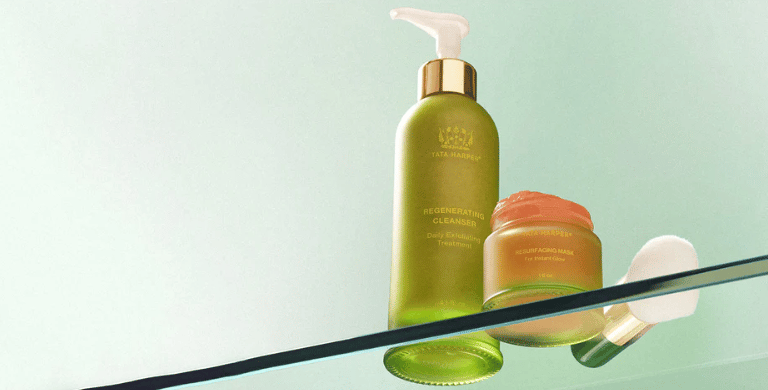Tata Harper: Farm-to-Face Clean Beauty
Sophia, The LuxEco Edit
10/1/20253 min read


In an industry where “clean beauty” has become one of the most overused phrases, Tata Harper remains a genuine pioneer. Founded in 2010 and headquartered on a 1,200-acre farm in Vermont, the brand redefined what it means to create luxury skincare rooted in transparency, sustainability, and performance. Long before the term farm-to-face gained traction, Tata Harper was living it — cultivating ingredients on-site, formulating in small batches, and building a vertically integrated business model that placed sustainability at its core.
For The LuxEco Edit, Tata Harper illustrates how authentic clean beauty can scale without losing credibility, setting a high bar for both indie start-ups and heritage luxury houses.
Brand Philosophy: From Farm to Face
The Tata Harper farm is more than a symbolic backdrop; it is the foundation of the brand’s philosophy. Unlike most skincare companies that outsource production to third-party labs, Tata Harper manages almost every process in-house:
Cultivation and Harvesting: Botanicals are grown and monitored on the Vermont farm.
Formulation and Production: All products are developed and manufactured on-site in small batches.
Traceability and Freshness: This closed-loop approach ensures ingredient integrity and minimises environmental footprint.
In a sector plagued by long, opaque supply chains, Tata Harper’s farm-to-face model has become a symbol of accountability. Consumers know not only what is in the product, but also where it comes from.
Hero Ingredients Spotlight
One of Tata Harper’s signatures is its ingredient density. Unlike minimalist formulations that focus on a handful of actives, Tata Harper products are often packed with 30 to 40 botanicals, creating a “multifunctional” profile.
Elderberry: Antioxidant-rich, helping protect against free radical damage.
Calendula: A soothing botanical used to support skin barrier health.
Alfalfa Extract: Often described as a natural alternative to retinol, offering gentle anti-ageing benefits.
Naturally Derived Hyaluronic Acid: Provides hydration without synthetic additives.
Willow Bark Extract: A natural source of salicylic acid for gentle exfoliation.
This maximalist approach underscores Tata Harper’s ethos: nature has abundance, and when combined intelligently, botanicals can deliver results that rival synthetic formulas.
Sustainability in Practice
Clean beauty is easy to claim, harder to prove. Tata Harper distinguishes itself by embedding sustainability throughout its operations:
Glass Packaging: The majority of products are housed in recyclable glass with minimal plastic.
Renewable Energy: The Vermont farm runs partially on solar power, aligning operations with low-carbon goals.
Eco-Certifications: The line is certified by Ecocert, Cosmos, and Leaping Bunny, adding third-party verification.
Vertical Integration: In-house production reduces transport emissions and ensures quality control.
This holistic model avoids the pitfall of “greenwashing,” where packaging or marketing outpaces substance.
The Luxury Positioning
Despite its farm-based DNA, Tata Harper positions itself firmly in the luxury skincare sector, with prices ranging from £70 to over £300. For the brand, luxury is not incompatible with sustainability; rather, the two reinforce each other.
The sleek green glass packaging, rich botanical blends, and sophisticated brand storytelling align Tata Harper with high-performance heritage houses such as La Mer or Dior Beauty. Yet the brand distinguishes itself through radical transparency. Every product label lists not only the actives, but also the percentage of natural origin ingredients.
This reflects a larger industry shift: sustainability is no longer an afterthought, but a competitive differentiator in luxury beauty.
Industry Influence
Tata Harper’s influence on the clean beauty landscape has been significant. By embedding sustainability into its brand DNA, it helped shape consumer expectations for transparency and traceability. Today, consumers are no longer satisfied with vague claims; they want proof.
This has pressured other players to adapt. Aesop now foregrounds ingredient sourcing and refills in its sustainability narrative. Dr. Jackson’s takes a botanical science approach with social impact. Meanwhile, refill-first pioneers such as REN Clean Skincare have broadened the conversation to include packaging circularity, while Evolve Organic Beauty continues to champion small-batch natural production.
Tata Harper sits within this ecosystem as a benchmark: proof that scale, luxury, and clean sustainability can co-exist.
Editorial Reflection: The Future of Clean Luxury
Tata Harper embodies the paradox of modern sustainability: how can luxury consumption align with ecological responsibility? The answer lies in radical transparency and a holistic approach. By controlling its farm, its lab, and its packaging choices, the brand creates a model that minimises ambiguity.
Yet challenges remain. Luxury at scale is never impact-free. Glass production has its own carbon footprint, and not all consumers will engage with recycling as intended. Still, the effort to internalise responsibility, rather than outsource it, positions Tata Harper as a leader in an industry often accused of greenwashing.
For The LuxEco Edit audience, the brand offers more than products; it offers a vision of what beauty could look like if integrity guided growth.
For those building a conscious beauty routine, Tata Harper demonstrates that farm-to-face can mean performance as well as purity. Each formula represents not only a skincare investment but a commitment to sustainability and accountability.
